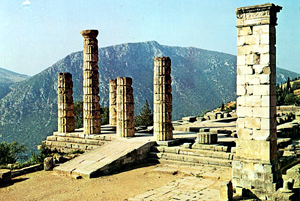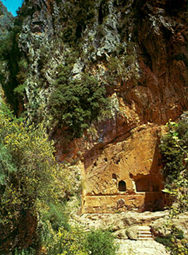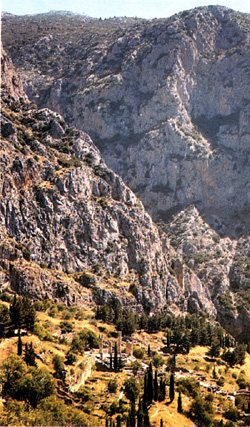|

An exploration of how and why places become invested with SACREDNESS and how the SACRED is embodied or made manifest through ART and ARCHITECTURE
DELPHI, GREECE
Located about one hundred miles northwest of Athens is the ancient site of the panhellenic sanctuary of Delphi.
The complex of buildings, which includes the Temple of Apollo where sat the famous oracle, the sacred Corycian Cave, and the Castalian Spring, is nestled in the forested slopes and rocky crags on the south side of the sacred mountain (cf. Mountains and the Sacred) called Parnassus. The site had been sacred since at least the Bronze Age.
According to legend, the shrine was originally guarded by the she-dragon Pytho. She was killed by Apollo who then took over the oracle. In antiquity, Delphi was regarded as the centre of the world.
 The Temple of Apollo The visible ruins belong to the last temple, dated to the 4th century BCE, which was peripteral, in Doric order. It was erected on the remains of an earlier temple, dated to the 6th century BCE. Inside was the adyton, the centre of the Delphic oracle and seat of Pythia. The monument was partly restored during 1938-1941.
 The Castalian Spring The sacred spring of Delphi lies in the ravine of the Phaedriades. The preserved remains of two monumental fountains that received the water from the spring date to the Archaic period and the Roman era. The later one is cut in the rock and has niches cut high in the cliff, which probably held the offerings to the Nymph Castalia. Bibliography:
|
|






